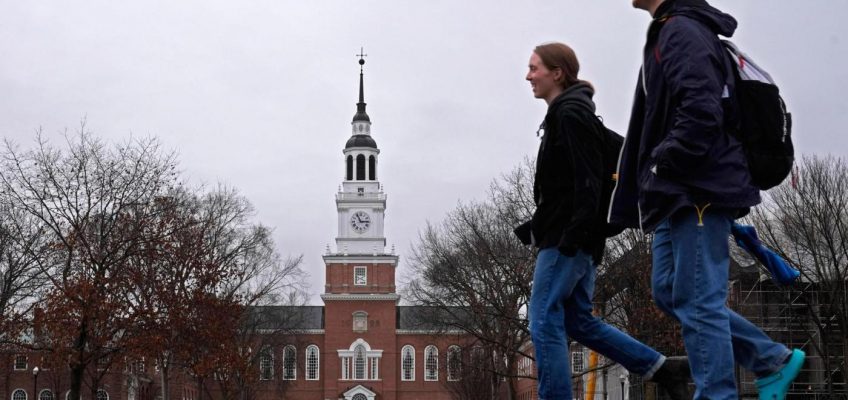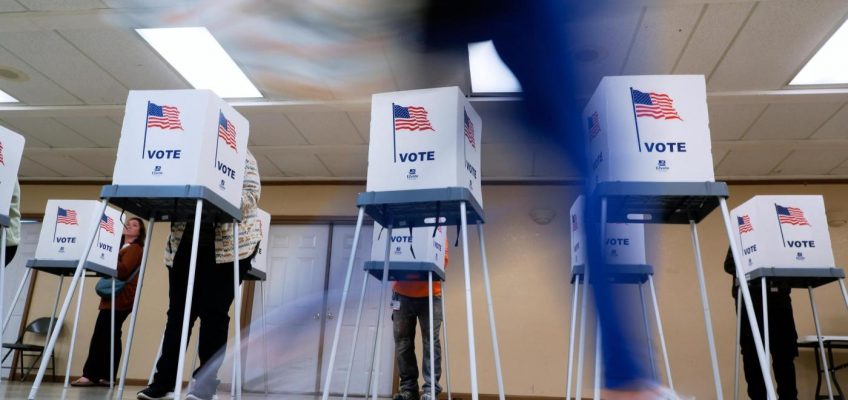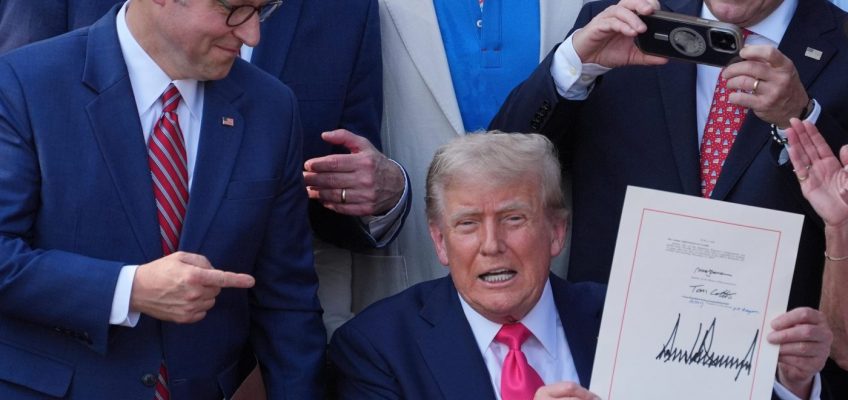The Twins led the Cubs 8-0 Tuesday at Target Field and were two outs away from a lopsided win, when Chicago sent veteran Justin Turner to the plate as a pinch hitter to face Minnesota lefty Joey Wentz.
Turner, a fiery redhead and one of the heroes for the Dodgers during their 2020 title run, promptly ripped a pitch into the leftfield seats, spoiling the shutout.
The homer meant little, save for the fact that it was the 200th of Turner’s career, and the Cubs fan who caught the ball – amazingly, a redhead named Justin, who lives in Richfield – was brought to the Cubs clubhouse to hand over the milestone sphere to Turner.
The two Justins snapped a few pictures, and upon request, the fan got three things from Turner in return for the home run ball: a bat signed by Turner, a ball signed by Turner, and a second ball signed by Michael Busch.
“One of my co-workers is friends with Busch’s sister,” the fan explained. “She’ll be pumped.”
Busch, the Cubs’ first baseman, had gone 1-for-4 in his homecoming game that night, playing in Minneapolis for the first time as a major leaguer, and the first time since a 2015 high school all-star showcase, when the emerging power hitter was a junior at Simley High School in Inver Grove Heights.
“He’s come a long way,” Turner said, in a bit of understatement, reflecting on the time the two spent in the Dodgers’ system when Busch was a prospect, and a project.
Even in a Twins rout, Busch got a rousing ovation every time he stepped to the plate Tuesday, thanks to an impressive contingent from his hometown on hand.
A star for the Spartans
Inver Grove Heights is bisected, north to south, by three major thoroughfares – Highway 52, Cahill Avenue and Concord Boulevard.
If tables were readily available and business was slow this week at places like the patio overlooking the river at Mississippi Pub, just off Concord, or by the outdoor volleyball courts at Drkula’s, on Cahill, or at the perpetually busy Inver Grove Brewing, where Concord and 52 intersect on the south side of town, there’s an easy explanation.
Twenty miles away, much of the Inver Grove community was packed into the Twins’ ballpark on Tuesday and Wednesday, to cheer for the local boy who’s done good.
“When I think back, it’s the community. Everybody involved, from the coaches to the teachers to the parents to the kids he played with, everybody had a part, you know,” said Busch’s father, Mike, who raised eight children on a modest living, and got plenty of backing from the people of Inver Grove’s various sports communities to get to a point where one of their own is batting in a major league lineup.
At Simley, Busch was a success no matter what sport he pursued. As a quarterback, he led the Spartans to the state title game in the fall of 2014, where Simley ultimately fell to a Mankato West powerhouse at the Gophers stadium.
On the hockey rink, he was a “control the game from the blue line” defenseman and a legitimate Division I prospect.
About the only sport that didn’t try to lure him onto a roster was the powerhouse Simley wrestling team, which is an every-year contender for the Minnesota state championship. Busch gushed about the pride he takes in being a Spartan and all that Simley wrestling has meant for the community, but said he was never recruited to be a grappler.
“I’m glad they didn’t,” he said. “No disrespect for that, but I was good playing hockey.”
Still, when Michael made the Spartans’ varsity baseball team as an eighth grader, playing with his brother Logan who is three years older, the family knew a calling had been found.
“That was the first time Logan took Michael under his wing, because those guys battled in everything,” said Mike, who admitted that just the Busch family had around 150 tickets for each game of the series, not counting the dozens of other friends, classmates, teammates and neighbors from Inver Grove who made their way to the ballpark. “Logan would never let Michael beat him in anything. I just knew, when he made varsity and we started watching him play baseball, that was it.”
Mike coached Michael’s older brothers Logan and Luke, but the father left Michael’s development to other coaches in the community. The elder Busch joked that if he’d stayed out of the way and had let others coach Logan and Luke as well, they’d no doubt be in the MLB by now also.
Long road to the Show
Logan went on to play college baseball at North Dakota State, and little brother had myriad offers to do the same.
“I grew up playing baseball and hockey my whole life. Football kind of came along a little later, but I loved playing all three and whatever I was playing, that was kind of what I loved,” Michael said, surrounded by a massive scrum of Minnesota media in the Cubs clubhouse. “And then I was just kind of told by college (baseball) coaches, it just started to be a thing, letters and calls and all that.”
After taking a long look at college programs like Minnesota and Nebraska, Michael took a visit to North Carolina and found his place, committing to the Tar Heels during his junior year of high school.
During the series opener in Minneapolis, Inver Grove resident and former youth baseball coach Tim Smith watched Busch play in person for the first time in roughly a decade, and conjured up a happy memory.
“The last time I saw him play was a game at Hastings. He had just signed with North Carolina,” said Smith, who grew up in east Bloomington, playing baseball with another decent local first baseman named Kent Hrbek. “First time up, he strikes out. The next time he’s up, the whole Hastings crowd starts chanting, ‘over-rated.’ He probably hit it 500 feet to dead center. It was one of the longest home runs I’ve seen in high school.”
They had modest expectations for how Michael’s game would translate to the college level in the powerful ACC, but when Mike got a call before his son’s first college game to learn that Michael was starting in the infield and batting third, it was an eye-opener.
Routed to Wrigley
After two solid seasons with the Tar Heels and a trip to the College World Series, there was some hope among Minnesota fans that the Twins would grab the local kid in the opening round of the 2019 MLB Draft. Picking 13th, Minnesota instead selected infielder Keoni Cavaco, while Busch was still available at 31 and was selected by the Dodgers.
Six years later, Busch and Cavaco are both playing ball in Chicago. But while one of them is at first for the Cubs, Cavaco is a converted pitcher for the independent league Chicago Dogs, who play in a 6,800-seat park in the suburbs versus teams like Winnipeg, Fargo-Moorhead and Sioux Falls. He was released by the Twins last summer.
The blessing for Busch was to get drafted by a first-class organization like the Dodgers, who have won two World Series in this decade and are an every-year playoff team. The curse was coming to an organization loaded with talent, making the big league lineup a tough thing to crack.
After minor league and development stops in St. Cloud, Massachusetts, Michigan, Arizona and Oklahoma, Busch made his MLB debut for Los Angeles in April 2023, and got in 27 games with the Dodgers that season with a pair of homers. Traded to the Cubs before the start of last season, he played all but 10 of Chicago’s regular season games in 2024.
Busch’s game has skyrocketed during his second season in the Second City, and he came home to the Twin Cities with 18 home runs and the title of reigning NL Player of the Week to his credit. That honor came after Busch provided his own Independence Day fireworks show at Wrigley Field, blasting three homers in a lopsided win against the hated Cardinals. He became the first Cubs first baseman to crack three in a game since “Mr. Cub” Ernie Banks did so in 1963.
Next pitch coming in
The success stems not just from natural talent, but from a “look forward” attitude Busch has always had, where what matters is not past results, good or bad, but the next game, the next at-bat, the next pitch.
“He’s always had the mentality for baseball,” said Jason Milbrandt, a friend of the Busch family from Inver Grove, whose son, Jonah, played alongside Michael in youth and high school sports. “Failure doesn’t bother him. Always a smile on his face. Get back in there, do it again. Just a grinder.”
Asked about his Fourth of July hat trick, Busch talked about the importance of playing well versus St. Louis as the Cubs hold first place in their division, and he looked forward, not back.
“It’s just kind of flush the past, no matter if it goes well or bad. Just kind of flush it and move on to this week,” he said.
In the winter, he maintains a home not far from the old neighborhood. Busch got a signing bonus of better than $2 million when he first was inked by the Dodgers, and is currently playing in the final year of a contract worth $780,000. Many predict a tenfold payday, or better, could be the value of his next contract.
As he prepared for his first game back in Minnesota, none of that mattered to Busch as much as being home, in front of the Inver Grove friends and the family which helped him get there.
“My whole family, throughout the course of my career, has always been there for me, no matter what,” said Busch, who invited members of the Simley baseball program onto the field for Cubs batting practice prior to Wednesday’s game. “Baseball’s never been the main thing in my life or the main thing in their life. Just the support they’ve offered me through the ups and downs, them being them, and still feeling like it’s home. I think that’s been so good to me.”
Twins beat Cubs as Simeon Woods Richardson continues impressive stretch
Zebby Matthews throws live batting practice for Twins
Twins’ Byron Buxton enters Home Run Derby field: “Once in a lifetime thing”
Twins’ Byron Buxton named to All-Star Game in home state of Georgia
Twins come back twice but fall to Rays in series finale




